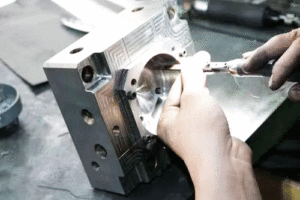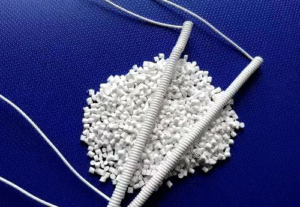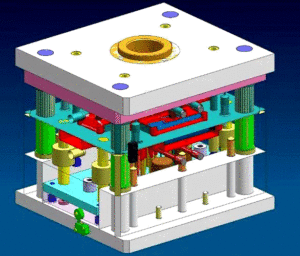
Polishing Treatment for Plastic Molds
Polishing Treatment for Plastic Molds With the widespread application of plastic products, such as daily-use items and beverage packaging containers, there is often a requirement
Injection molds should be tested for various performance parameters while the injection molding machine and mold are operating normally. The dimensions of the final molded plastic parts should be measured. With this information, you can determine the current state of the mold and identify the damage to components like the cavity, core, cooling system, and parting lines. Based on the information from the plastic parts, you can assess the mold’s damage and plan repair measures.

In the course of use, springs are the most prone to damage, often exhibiting breakage and deformation.
The solution is to replace them, and it’s important to pay attention to the specifications and models of the springs during the replacement process. Spring specifications and models are confirmed through three factors: color, outer diameter, and length. Replacement is only possible when all three factors match.
During the use of mold products, punches are prone to breakage, bending, and wear, while bushings are typically subject to wear.
Damaged punches and bushings are generally replaced with parts of the same specifications. The key parameters for punches include dimensions of the working part, dimensions of the mounting part, and overall length.
Components also need occasional fastening, so it’s important to regularly check if fasteners have become loose or damaged. The solution is to replace them with parts of the same specifications.
During maintenance, inspect the relationships between various parts for any damage, and repair the damaged sections. Check for air leakage in the pneumatic components and take measures as needed. If the air hose is damaged, replace it.
It’s important to focus on tracking and inspecting several critical components of the mold:
The ejector and guide components ensure the mold’s opening and closing motion and the ejection of plastic parts. If any of these parts get stuck due to damage, it will result in production stoppage. Therefore, it’s essential to keep the mold pins and guide posts lubricated (using the most suitable lubricant) and regularly inspect them for deformation and surface damage. If any issues are found, replace them promptly.
After completing a production cycle, it’s essential to apply professional rust-preventative oil to the mold’s working surfaces, moving parts, and guide components.
Special attention should be given to protecting the gear and rack mold bearing areas, as well as the spring mold’s elastic strength, to ensure they remain in optimal working condition.
Attention should also be given to cleaning the runners because over time, cooling channels can accumulate scale, rust, sludge, and algae. This can cause a reduction in the cross-section of cooling channels and narrow the cooling passages, significantly reducing the heat exchange rate between the cooling fluid and the mold, which increases production costs for the company.
For hot runner mold products, maintenance of the heating and control systems is beneficial in preventing production failures.

Polishing Treatment for Plastic Molds With the widespread application of plastic products, such as daily-use items and beverage packaging containers, there is often a requirement

Injection Molding Techniques for TPE and TPR Injection Molding Techniques for TPE and TPR 1. Dry the TPE and TPR material before injection molding It

Winter Maintenance Measures for Injection Molding Machines As winter approaches and temperatures gradually drop, a cold chill envelops the earth. While ensuring personal warmth, it

Assessment Regulations for Mold Trial Exceeding 3 Times Assessment Regulations for Mold Trial 1. Purpose The purpose of this regulation is to standardize the work of